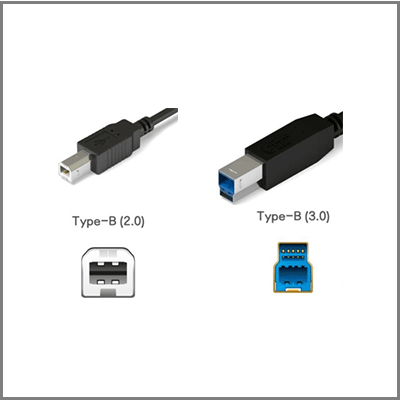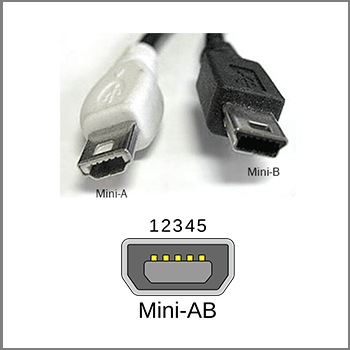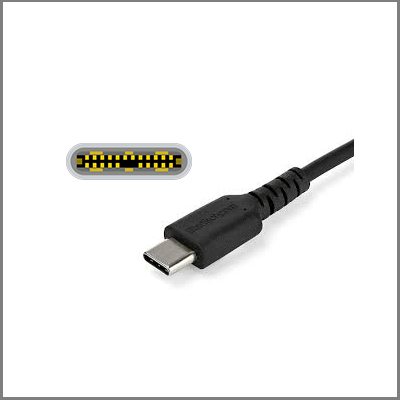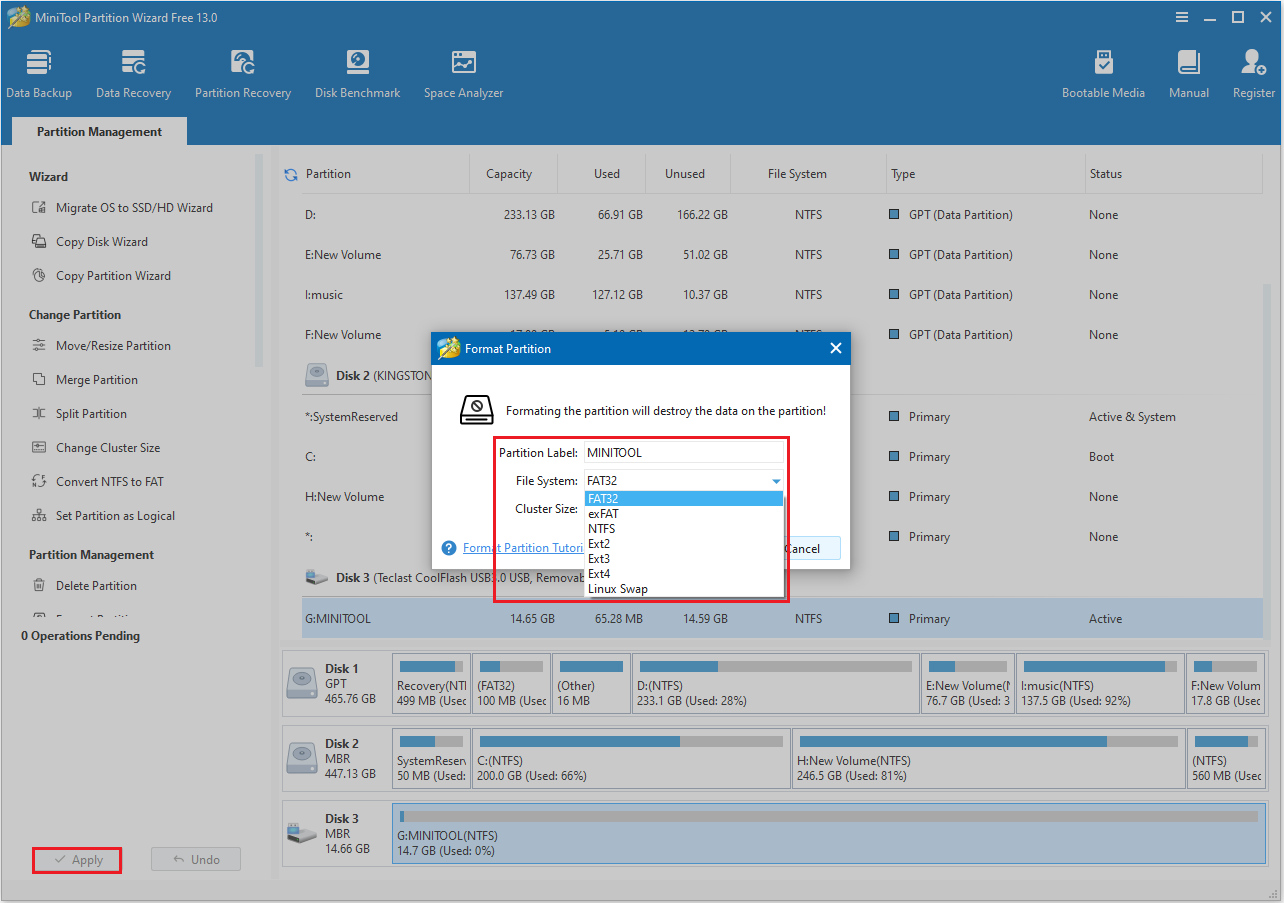USB, or Universal Serial Bus, is a standard technology used to connect devices to computers for data and power transfer. With continuous technological advancements, various types and versions of USB have emerged.
Next, I will introduce the different types and versions of USB connectors and share key considerations when purchasing USB cables.
What Are the Different Types of USBs?
Have you noticed that different USB interfaces differ in appearance and usage? Some can be inserted from both sides, while others can only be connected from one side. Some interfaces have a front and a back, while others do not.
The fundamental reason for these differences lies in the different types and versions of USB interfaces.
The following section will introduce the main types of flash drives and their characteristics to help you understand the differences between them.
USB Connector Types
| Connector Type | Shape | Reversible? | Common Use |
| USB Type-A | Rectangular | No | Host devices like computers, TVs, game consoles, and chargers |
| USB Type-B | Squared | No | Larger peripheral devices like printers and scanners |
| Mini-USB | Smaller rectangular | No | Older digital cameras, MP3 players, and some older game controllers |
| Micro-USB | Smaller rectangular | No | Older smartphones, digital cameras, and portable hard drives |
| USB Type-C | Small, oval | Yes | Modern smartphones, laptops, tablets, and gaming consoles |
| Lightning | Small, symmetrical | Yes | Apple devices (iPhone, iPad) |
#1. USB Type-A

A standard USB Type-A connector is a long, thin, rectangular plug used to insert into the Type-A port of a computer or USB hub, allowing for both data and power transfer.
#2. USB Type-B

A standard Type-B USB plug is also nearly square with bevelled corners and can be inserted into an upstream port on a device, such as a printer. On some devices, the Type-B interface is only used for power supply and does not have data transfer capabilities.
#3. Mini-USB

The Mini-USB interface was introduced in the USB 2.0 era and is primarily used in small electronic devices such as digital cameras, smartphones, and tablets.
Mini-A and Mini-B plugs are approximately 3 x 7 mm (0.12 x 0.28 inches) in size.
Mini-A connectors and Mini-AB sockets were discontinued in May 2007; Mini-B connectors are now more common.
#4. Micro-USB

The Micro-USB connector is similar in width to the Mini-USB connector, but about half the thickness.
The Micro-A plug measures 6.85 × 1.80 mm (0.270 × 0.071 inches), with a maximum housing size of 11.7 × 8.5 mm (0.46 × 0.33 inches).
The Micro-B plug measures 10.6 × 8.5 mm (0.42 × 0.33 inches) in both width and height.
Tip: When users refer to Micro-USB, they usually mean the compact Micro-B, while Micro-A is almost non-existent in the market. The Micro-AB female connector is designed to accept both Micro-A and Micro-B male connectors.
#5. USB Type-C

The USB Type-C connector is compact, supports fast data transfer, and is multifunctional. It can transmit data, video, and power simultaneously, making it the most advanced USB interface type available today.
#6. Lightning

The Lightning interface has a sophisticated structure and stable connection, but it is only compatible with Apple products.
USB Standard Versions
| USB Version | Connector Types | Compatibility | Maximum Transfer Speed |
| USB 1.0/1.1 | Type-A、Type-B | Backward compatibility | 12 Mbps (megabits per second) |
| USB 2.0 | Type-A、Type-B、Mini/Micro | Backward compatibility | 480 Mb/s |
| USB 3.0 | Type-A、Type-B、Micro-B | Backward compatibility | 5 Gb/s |
| USB 3.1 | Type-A、Type-C | Backward compatibility | 10 Gb/s |
| USB 3.2 | Type-A、Type-C | Backward compatibility | 20 Gb/s |
| USB4 | Type-C | backward compatibility | 40 Gb/s |
| USB4 v2.0 | Type-C | backward compatibility | 80 Gb/s (or 120 Gb/s asymmetric) |
Further Reading: Essential Tips for Purchasing a USB Cable
When purchasing a USB data cable, consider the following factors:
- Confirm the USB interface type: Common interface types include USB-A, USB-B, USB-C, and Micro-USB. Different devices use different interface types, so ensure the cable is compatible with your device.
- Choose the data transfer speed: USB data cables vary in speed. Generally, USB 2.0 is slower, while USB 3.0, 3.1, and 3.2 are faster.
- Choose the charging capability: If your primary use is for charging, ensure the cable can support the current and voltage required by your device, especially for fast charging.
- Confirm compatibility: Ensure the cable is fully compatible with your device. For example, some USB-C devices may not work properly with USB-C cables that do not support the PD protocol.
- Brand and certification: Before purchasing a USB data cable, check for safety certifications to ensure product quality and safety.
After learning about the various USB types, we will now look at some common USB storage device types and how they meet different usage needs.
Common USB Storage Device Types
There are mainly two types of USB drives.
1. USB Flash Drives
- USB flash drives use flash memory storage technology.
- These small, lightweight devices typically feature USB 3.0 or USB 3.1 interfaces and serve primarily for file transfer, temporary data backup, and carrying commonly used software and files
2. External Hard Drives
- External hard drives are HDDs or SSDs using the USB interface. Their capacity is usually larger than USB flash drives.
- Compared to external SSDs, external HDDs are much slower, but they often have larger capacities.
Now that we understand the common types of USB storage devices, let’s take a look at how to format a USB drive.
How to Format a USB Drive
After purchasing a new USB drive, some setup is usually required before use. The most common step is formatting it.
On Windows, File Explorer allows you to format a pen drive to NTFS, FAT32, or exFAT. However, this method comes with some limitations, including the inability to format partitions larger than 32GB as FAT32.
MiniTool Partition Wizard overcomes this limitation and offers support for a broader selection of file systems, including NTFS, FAT32, EXT2/3/4, exFAT, and Linux Swap.
With just a few simple steps, you can easily format the partition. Furthermore, it allows you to convert MBR to GPT, create/extend/delete partitions, recover data from external hard drive.
So, how do you choose the right file format for your USB drive? Below is a comparison of several common formats:
- NTFS is a proprietary journaling file system developed by Microsoft and is the default file system for Windows NT-based systems. It offers high security, supports file compression, and has no practical file size limit.
- FAT32 is a file system supported by almost all operating systems and portable devices, including nearly all versions of Windows, macOS, Linux, and most USB-enabled devices. However, its main drawback is that the size of a single file is limited to 4GB, and the partition capacity is limited to 32GB.
- exFAT is similar to FAT32 but without its file size and partition size limitations, making it ideal for scenarios that require larger file support than FAT32, especially when NTFS is not suitable.
- Ext 2/3/4 are file systems created specifically for Linux. If you plan to use your USB drive with a Linux computer, this would be the best option.
After determining the file system for your USB drive, click the button below to download and install MiniTool Partition Wizard, and follow the prompts to complete the USB drive formatting process.
MiniTool Partition Wizard FreeClick to Download100%Clean & Safe
Step 1: Connect your USB drive to your PC and launch MiniTool Partition Wizard to its main interface.
Step 2: Right-click the USB drive and select Format from the context menu.
Step 3: In the new pop-up window, set the Partition Label, File System, and Cluster Size. Then click OK to continue.
Step 4: Click the Apply > Yes buttons in the upper left corner to allow the pending operations.

Now you know how to format a USB drive. Whether you’re optimising device performance or resolving storage issues, you can handle it with ease.
Bottom Line
This article has provided you with an in-depth understanding of various USB types and versions, and a step-by-step guide on how to format a USB drive.
Whether you’re troubleshooting storage issues or checking device compatibility, mastering this information will greatly improve your workflow.
If you have any questions or suggestions while using MiniTool Partition Wizard, you can contact us via [email protected] for further assistance.

User Comments :